Results 4,021 to 4,030 of 12096
Thread: Anandtech News
-
06-18-14, 04:00 PM #4021
Anandtech: Amazon Unveils the Fire Phone
Today Amazon took to Seattle to announce their first foray into the Android phone market. Amazon is no stranger to Android devices. They led the charge for 7” tablets with the original Kindle Fire and they've expanded their lineup to Android tablets of many sizes. An Android based Amazon phone has long been rumored but has never come to fruition, until now. The Fire Phone is Amazon’s first Android smartphone and it has a couple interesting points of differentiation to say the least. The full specifications are laid out below.
The Fire Phone runs Amazon's heavily modified version of Android which Amazon calls Fire OS. Much of the changes and additions involve features that work with Amazon's services. The Fire Phone uses Amazon's Android app store for downloading and purchasing applications rather than Google Play, and many of the stock applications are designed to allow integration with Amazon's cloud services such as Amazon music store streaming in the music app and Amazon Prime TV and movie streaming in the stock videos app. Amazon also includes unlimited cloud storage for storing photos taken with the Fire Phone in full resolution.Amazon Fire Phone SoC Qualcomm Snapdragon 800 (MSM8974VV) 4 x Krait 400 at 2.2GHz
Adreno 330 at 450MHzMemory and Storage 32/64GB NAND + 2GB LPDDR3 Display 4.7” 1280x720 LCD with 590cd/m2 brightness + Circular Polarizer Cellular Connectivity 2G / 3G / 4G LTE (Qualcomm MDM9x25 UE Category 4 LTE) Dimensions 5.5" x 2.6" x 0.35", 160g Camera 13 MP Rear Facing w/ F2.0 aperture + OIS
4x 2.1MP 1080p Front Facing w/ 120 degree FOVBattery 2400 mAh (9.12Whr) Other Connectivity 802.11 a/b/g/n/ac + BT 3.0, USB2.0, GPS/GNSS, NFC SIM Size Nano-SIM Operating System Android based Amazon Fire OS 3.5
One of the big software features Amazon is touting is called Firefly. In a similar fashion to Google Goggles, firefly can use the device's camera to examine photographs and logos, scan barcodes, identify works of art, etc. It can also use the device's microphone to identify a song in a similar fashion to Shazam. The ability to utilize Firefly is always available to the user through a dedicated hardware button on the side of the device that launches the camera application immediately. Amazon is also shipping an SDK for application developers so they can integrate the use of Firefly into applications to perform actions such as playing a song in a radio app or looking up nutritional information from a logo on a chocolate bar.
The part of the software that really differentiates the Fire Phone from other devices is something Amazon is calling Dynamic Perspective. This is where the hardware and software of the phone work together to create something unique. Using the device's sensors and two of the four front facing cameras on the front of the device depending on how the phone is being held, the interface of the device will shift. Amazon is really touting how this works for navigating the interface on the device. The user can swivel the device in hand to view the notification drawer and quick toggles for settings like WiFi and Bluetooth. The user can also tilt the device to view information that may be hidden underneath labels or action bars. With this Amazon creates an sort of pseudo-3D interface which reacts to motion and movement. An SDK for working with Dynamic Perspective is available to developers who wish to incorporate these features into their applications. To ensure these features remain functional in low light situations, each front camera sensor has an IR flash which keeps the user's face visible to the camera sensors when external lighting is poor.
Amazon is also offering a selection of polyurethane cases for the Fire Phone that come in five different colors. The cases will begin to ship along with the phones themselves and they're currently listed at $29.99 on Amazon.
With the Fire Phone there's a big catch, and that's that on contract it's exclusive to AT&T. Users who want to purchase the device outside the US or on another US carrier will have to purchase it outright. The Fire Phone is available for pre-order now on Amazon at $199 or $299 on contract for the 32GB and 64GB models respectively. Buyers purchasing it off contract will have to pay $649 for the 32GB and $749 for the 64GB models. The Fire Phone will begin shipping to buyers on July 25th.
Source: Amazon
More...
-
-
06-18-14, 09:00 PM #4023
Anandtech: T-Mobile Announces Test Drive, A Free Trial for a Week
Today, T-Mobile announced that they have already rolled out wideband LTE to 16 markets and VoLTE to 15 markets, with 100 million people currently covered by the 15 VoLTE markets and plans to expand this coverage nationwide by the end of the year. However, the real news this is their Test Drive program. This means that people can sign up to get an iPhone 5s with unlimited voice, text, and data. This trial period will last a week, with no money down or obligation to stay with T-Mobile once the week is over. In short, it’s possible to try T-Mobile with no strings attached for a week now. The real reason for this is to avoid buyer's rermorse, with the hope of also attracting more customers to T-Mobile by reducing the inherent risk currently present in the contract system when one switches from one carrier to another. CEO John Legere stated during the presentation that the remorse rate for those purchasing service from a wireless operator is worse than those that purchase a used car. According to T-Mobile, 46% experience regret over their choice of network operator, which is one of the main reasons for this program.
The program starts on June 23rd and the website to sign up for this program is Object moved.
More...
-
06-18-14, 10:00 PM #4024
Anandtech: T-Mobile Unveils Unlimited Music Streaming and unRadio
T-Mobile has been a significant disruptor in the US operator business as of late with John Legere at the helm. Previously, they’ve gotten rid of contracts, introduced free global roaming, six month upgrade plans, and now, unlimited music streaming for Simple Choice customers. This means that services like iHeartRadio, Pandora, Rhapsody, iTunes, Slacker Radio, and Spotify no longer count against the data cap that is in place. This is in addition to T-Mobile endorsed music services such as Samsung’s Milk Music and Beatport from SFX. T-Mobile is also offering the ability to vote for additional music services at www.t-mobilemusicfreedom.com.
In addition to unlimited music streaming, T-Mobile is announcing their own music streaming service called unRadio by partnering with Rhapsody. This is an internet radio service that allows unlimited skipping, no ads, custom radio stations, and the ability to save songs to listen to later, even without a data connection. T-Mobile is also advertising the ability to stream from thousands of terrestrial radio stations. Finally, unRadio will come with its own TrackMatch feature that can identify songs similar to Shazam or SoundHound, and allow you to create a station with that song or save it for later listening. This service will be free for those on Simple Choice plans with unlimited data, and 4 dollars a month for all other T-Mobile US customers.
All of these will definitely require a great deal of backhaul to support massive amounts of music streaming, and T-Mobile seems to be confident that they can pull it off. Judging by their large lead over all the other major national network operators, T-Mobile should have the backhaul to pull it off, especially in markets where they're deploying 20 MHz LTE.
More...
-
06-19-14, 11:01 PM #4025
Anandtech: Samsung Launches the Galaxy S5 Broadband LTE-A: First Snapdragon 805 Phone
While this launch is Korea-only, Samsung recently announced a new version of their Galaxy S5 smartphone, dubbed the Galaxy S5 Broadband LTE-A. Naming aside, this makes this phone the first to launch with APQ8084 and MDM9x35. For those unfamiliar with Snapdragon 805 and MDM9x35, this means that the CPUs are now Krait 450 instead of Krait 400, and the GPU is now Adreno 420 instead of Adreno 330. While the CPU revisions are minor, the GPU is fast enough to have the same level of performance at 1440p as an Adreno 330 at 1080p. The MDM9x35 modem also means that category 6 LTE is supported for speeds of up to 300 Mbps. The MDM9x35 is also the first 20nm SOC part shipping from TSMC, which bodes well for 20nm SoCs in the near future.
Qualcomm also notes that this phone integrates the WTR3925 transceiver, so carrier aggregation is done on a single chip instead of the WTR1625L/WFR1620 dual-chip solution that was previously needed. Samsung also integrated a QHD (2560x1440) OLED display into this model at the same 5.1" display size. The only other difference is that the phone now has 3GB RAM instead of the 2GB present in the international model. Otherwise, the rest of the phone is identical to the international Galaxy S5. It's curious to note that Samsung has chosen to use the 2.5 GHz bin of the APQ8084 line rather than the highest 2.7 GHz bin, although the reasons behind this decision aren't quite clear yet.
More...
-
06-20-14, 02:00 AM #4026
Anandtech: HP ZBook 14 Review: Mobile Workstation Meets Ultrabook
What do you get when you cross an Ultrabook with enterprise features including an optional professional OpenGL GPU? This is apparently the question HP's engineers were asking, and the result is the ZBook 14. We haven't seen many Ultrabooks with discrete graphics so far, which isn't too surprising considering the thin chassis designs and the need to keep everything running cool. Needless to say, if you're hoping for a high-end GPU in an Ultrabook, that's not happening right now, but HP has included an AMD FirePro M4100 FireGL V graphics solution, an entry-level dGPU solution, but as a member of the FirePro family it comes with drivers that have a few extra features unlocked. If you want a thin and light laptop (Ultrabook) but still want access to a professional level GPU, this is basically the only option right now. Read on for our full review.
More...
-
06-20-14, 09:31 AM #4027
Anandtech: NVIDIA Kepler Cards Get HDMI 4K@60Hz Support (Kind Of)
An interesting feature has turned up in NVIDIA’s latest drivers: the ability to drive certain displays over HDMI at 4K@60Hz. This is a feat that would typically require HDMI 2.0 – a feature not available in any GPU shipping thus far – so to say it’s unexpected is a bit of an understatement. However as it turns out the situation is not quite cut & dry as it first appears, so there is a notable catch.
First discovered by users, including AT Forums user saeedkunna, when Kepler based video cards using NVIDIA’s R340 drivers are paired up with very recent 4K TVs, they gain the ability to output to those displays at 4K@60Hz over HDMI 1.4. These setups were previously limited to 4K@30Hz due to HDMI bandwidth availability, and while those limitations haven’t gone anywhere, TV manufacturers and now NVIDIA have implemented an interesting workaround for these limitations that teeters between clever and awful.
Lacking the available bandwidth to fully support 4K@60Hz until the arrival of HDMI 2.0, the latest crop of 4K TVs such as the Sony XBR 55X900A and Samsung UE40HU6900 have implemented what amounts to a lower image quality mode that allows for a 4K@60Hz signal to fit within HDMI 1.4’s 8.16Gbps bandwidth limit. To accomplish this, manufacturers are making use of chroma subsampling to reduce the amount of chroma (color) data that needs to be transmitted, thereby freeing up enough bandwidth to increase the image resolution from 1080p to 4K.
Specifically, manufacturers are making use of Y'CbCr 4:2:0 subsampling, a lower quality sampling mode that requires ¼ the color information of regular Y'CbCr 4:4:4 sampling or RGB sampling. By using this sampling mode manufacturers are able to transmit an image that utilizes full resolution luma (brightness) but a fraction of the chroma resolution, allowing manufacturers to achieve the necessary bandwidth savings.
The use of chroma subsampling is as old as color television itself, however the use of it in this fashion is uncommon. Most HDMI PC-to-TV setups to date use RGB or 4:4:4 sampling, both of which are full resolution and functionally lossless. 4:2:0 sampling on the other hand is not normally used for the last stage of transmission between source and sink devices – in fact HDMI didn’t even officially support it until recently – and is instead used in the storage of source material itself, be it Blu-Ray discs, TV broadcasts, or streaming videos.
Perceptually 4:2:0 is an efficient way to throw out unnecessary data, making it a good way to pack video, but at the end of the day it’s still ¼ the color information of a full resolution image. Since video sources are already 4:2:0 this ends up being a clever way to transmit video to a TV, as at the most basic level a higher quality mode would be redundant (post-processing aside). But while this works well for video it also only works well for video; for desktop workloads it significantly degrades the image as the color information needed to drive subpixel-accurate text and GUIs is lost.
In any case, with 4:2:0 4K TVs already on the market, NVIDIA has confirmed that they are enabling 4:2:0 4K output on Kepler cards with their R340 drivers. What this means is that Kepler cards can drive 4:2:0 4K TVs at 60Hz today, but they are doing so in a manner that’s only useful for video. For HTPCs this ends up being a good compromise and as far as we can gather this is a clever move on NVIDIA’s part. But for anyone who is seeing the news of NVIDIA supporting 4K@60Hz over HDMI and hoping to use a TV as a desktop monitor, this will still come up short. Until the next generation of video cards and TVs hit the market with full HDMI 2.0 support (4:4:4 and/or RGB), DisplayPort 1.2 will remain the only way to transmit a full resolution 4K image.
More...
-
06-21-14, 10:00 AM #4028
Anandtech: FPGA news roundup: Microsoft "Catapult", Intel's hybrid and Xilinx OpenCL
There has been some activity in the FPGA realm lately. First, Microsoft has published a paper at ISCA (a very well-known peer-reviewed computer architecture conference) about using FPGAs in datacenters for page ranking processing for Bing. In a test deployment, MS reported up to 95% more throughput for only 10% more power. The added total cost of ownership (TCO) was less than 30%. Microsoft used Altera Stratix V FPGAs in a PCIe form-factor with 8GB of DDR3 RAM on each board. The FPGAs were connected with each other in a 6x8 torus configuration using a 10Gb SAS network. Microsoft mentioned that it programmed the FPGAs in Verilog and that this hand-coding was one of the challenging aspects of the work. However, Microsoft believes using high-level tools such as Scala (presumably a domain-specific subset), OpenCL or "C-to-gates" tools such as AutoESL or ImpulseC might also be suitable for such jobs in the future. Microsoft appears to be pretty happy with the results overall and hopes to deploy the system in production in 2015.
Intel revealed plans to manufacture a CPU-FPGA hybrid chip that combines Intel's traditional Xeon-line CPU cores with FPGAs on a single chip. The FPGA and CPU will have coherent access to memory. The exact details of the chip, such as number of CPU cores or the amount of logic and other resources of the FPGA, or even who is the source for the FPGAs (likely Altera), is not revealed. However, we do know that the chip will be package compatible with the existing Xeon E5 line. Intel mentions that FPGAs can deliver "up to 10x" the performance on unspecified industry benchmarks. Intel further claims its implementation will deliver another 2x improvement (so 20x total) because of coherency and lower CPU-FPGA latency. We will have to wait for more information about this product to validate any of Intel's claims. It will also be interesting what software and development tools Intel provides for this chip.
Finally, you may remember our previous coverage of OpenCL on Altera's FPGAs and we had mentioned that Xilinx had some plans for OpenCL as well. Recently (~2 months ago) Xilinx updated its Vivado design suite and now includes "early access" support for OpenCL.
Overall, these announcements point to increased adoption of FPGAs in mainstream applications. Datacenters are very focused on performance per watt as they tend to be power limited, with increasing performance needs. Progress on scaling performance through multicore CPUs has slowed, and relying on GPUs to increase overall performance per watt has an upper bound as well. In a power constrained environment where two different types of general purpose processors are limited by progress on the process node side, we need to find another option to continue to scale performance. In an ideal world, one may design application-specific integrated circuits (ASICs) to get the highest performance/watt, but ASICs are hard to design and once deployed cannot be changed. This solution is not a good fit for datacenter applications, where the workload (such as algorithms for search) are tweaked and changed over time. FPGAs can offer a happy medium between CPUs and ASICs in that they offer programmable and reconfigurable hardware and can still offer a performance/watt advantage over CPUs because they effectively customize themselves to the algorithm. Making FPGAs accessible to more mainstream application programmers (i.e. those who are used to writing C, C++, Java etc. and not Verilog) will be one of the problems and tools such as OpenCL (and more) are gaining steam in this space.
More...
-
06-22-14, 06:00 PM #4029
Anandtech: QNAP TS-x51 NAS Series: Intel Quick Sync Gets its Killer App
At Computex 2014, we visited QNAP and came away with a lot of information (some of which had already been demonstrated at CES). After Computex, QNAP got in touch with me to better explain the various features of the newly introduced TS-x51 series (which was not at CES). And, boy, was I floored?! Usually, you don't see me getting very excited over a product announcement. However, I believe that QNAP's TS-x51 family has the capability to revolutionize the NAS market for home users and media enthusiasts, particularly in the way it utilizes Intel Quick Sync technology. Read on to for our analysis of where that market segment is headed, and why the TS-x51's unique feature set may be the start of interesting things to come.
More...
-
06-23-14, 02:39 AM #4030
Anandtech: ISC 2014: NVIDIA Tesla Cards Add ARM64 Host Compatibility
Kicking off this week for the world of supercomputing is the 2014 International Supercomputing Conference in Leipzig, Germany. One of the major supercomputing conferences, ISC is Europe’s largest supercomputing conference and as one would expect, an important show for companies vested in high performance computing (HPC) and other aspects of supercomputing. We’ll see a few announcements out of ISC this week, and starting things off will be NVIDIA.
NVIDIA will be taking to the ISC show floor to announce that their Tesla products will be adding ARM64 host compatibility, enabling them to be used in ARM64 systems. NVIDIA has been a supporter of the ARM ecosystem for some time through the use ARM cores in their Tegra SoCs and by enabling CUDA on ARM processors. Adding 64bit ARMv8 (ARM64) support then is a logical extension of this by bringing their hardware and toolkit forward to the new generation of 64bit ARM processors.
However while NVIDIA’s previous ARM works have been focused on consumer uses, today’s Tesla ARM64 announcement is focused on the professional computing side and hence the use of ISC as a backdrop for this announcement. With today’s announcement NVIDIA is expanding their Tesla and HPC efforts into the ARM ecosystem, intending to bootstrap and support the growing use of ARM CPUs as the core processors in HPC setups. ARM CPUs have already made some headway into the micro server space for tasks that require many low performance threads, however it’s not until ARMv8 that ARM processors have gained the ability to address enough memory and have gained enough in performance to be useful in HPC applications. With the increased capabilities of ARM64 processors, HPC system builders can now design systems around ARM, with NVIDIA taking up their now well-defined position as a GPU supplier to provide their highly parallel processors to complete these systems.
All things considered NVIDIA is not necessarily introducing new functionality or new performance, but the addition of ARM64 support means that NVIDIA is hedging their bets in the server space. The company already supports Tesla products connected x86 servers in traditional HPC setups, will offer deeper Tesla support on POWER platforms through their forthcoming NVLink interconnect, and now the company is covering the other end of the spectrum by offering Tesla support for ARM64 platforms. So far the ARM architecture has yet to prove itself in the HPC market beyond some very specific micro server roles, but with NVIDIA’s continued success in the HPC market and the potential for ARM to disrupt the traditional x86 market, it’s not surprising to see NVIDIA hedging their bets just in case that disruption occurs. No matter what happens – x86 holds, POWER takes off, or ARM disrupts – NVIDIA intends have the market covered.
To that end, along with today’s announcement of ARM64 compatibility NVIDIA is also announcing the first Tesla ARM64 development platforms. In July, Cirrascale will be shipping their RM1905D 1U development platform, which contains a pair of Applied Micro X-Gene CPUs along with a pair of Tesla K20 accelerator cards. Meanwhile E4 will be shipping their EK003 system, a 3U system with two X-Gene CPUs and two Tesla K20s.
The Tesla cards of course need no introduction, and meanwhile the X-Gene is an in-house design from Applied Micro that has 8 ARMv8 cores clocked at 2.4GHz. We have previously looked at the X-Gene design a couple of years back, and while they didn’t end up being the first shipping ARMv8 design (Apple’s Cyclone beat them), they are the first ARMv8 design shipping with the appropriate PCIe support to be paired up with Tesla cards. At the time Applied Micro was shooting for a fairly aggressive performance level, but as of right now we don’t know how the X-Gene compares to other ARMv8 designs such as Cyclone, Cortex-A57, and NVIDIA’s own Denver.
Finally, being released in conjunction with these platforms will be the CUDA 6.5 toolkit, which will be introducing ARM64 support on the CUDA side. NVIDIA has not announced a release date for CUDA 6.5, and at this point it’s safe to assume it’s a development release alongside these ARM64 development platforms.
More...
Thread Information
Users Browsing this Thread
There are currently 40 users browsing this thread. (0 members and 40 guests)




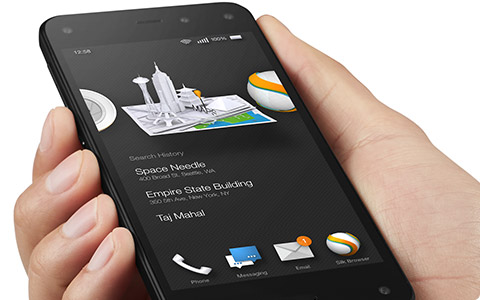




 Quote
Quote
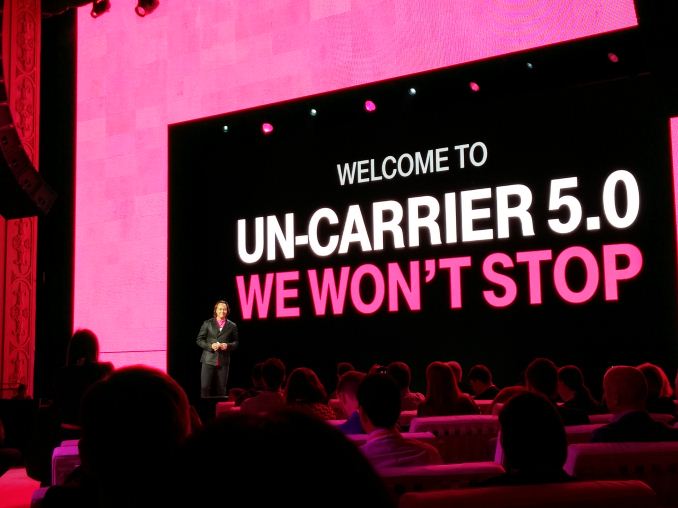

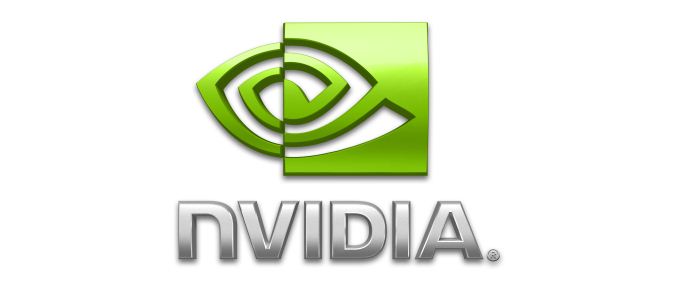


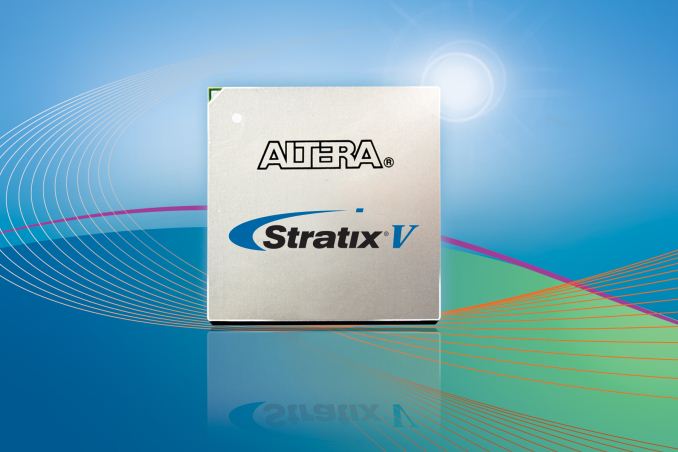

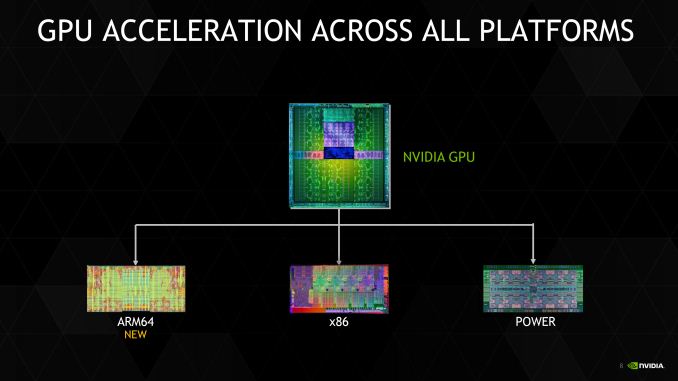
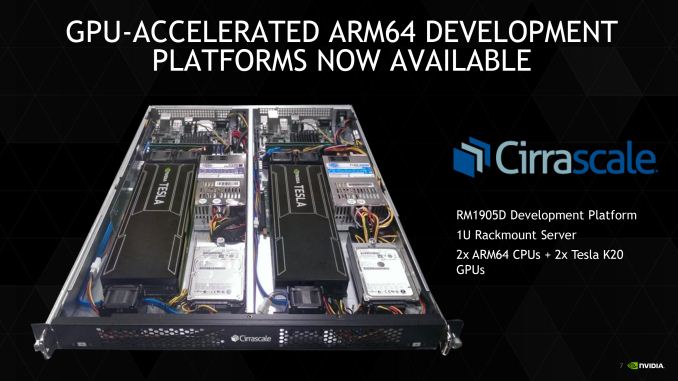
















Bookmarks